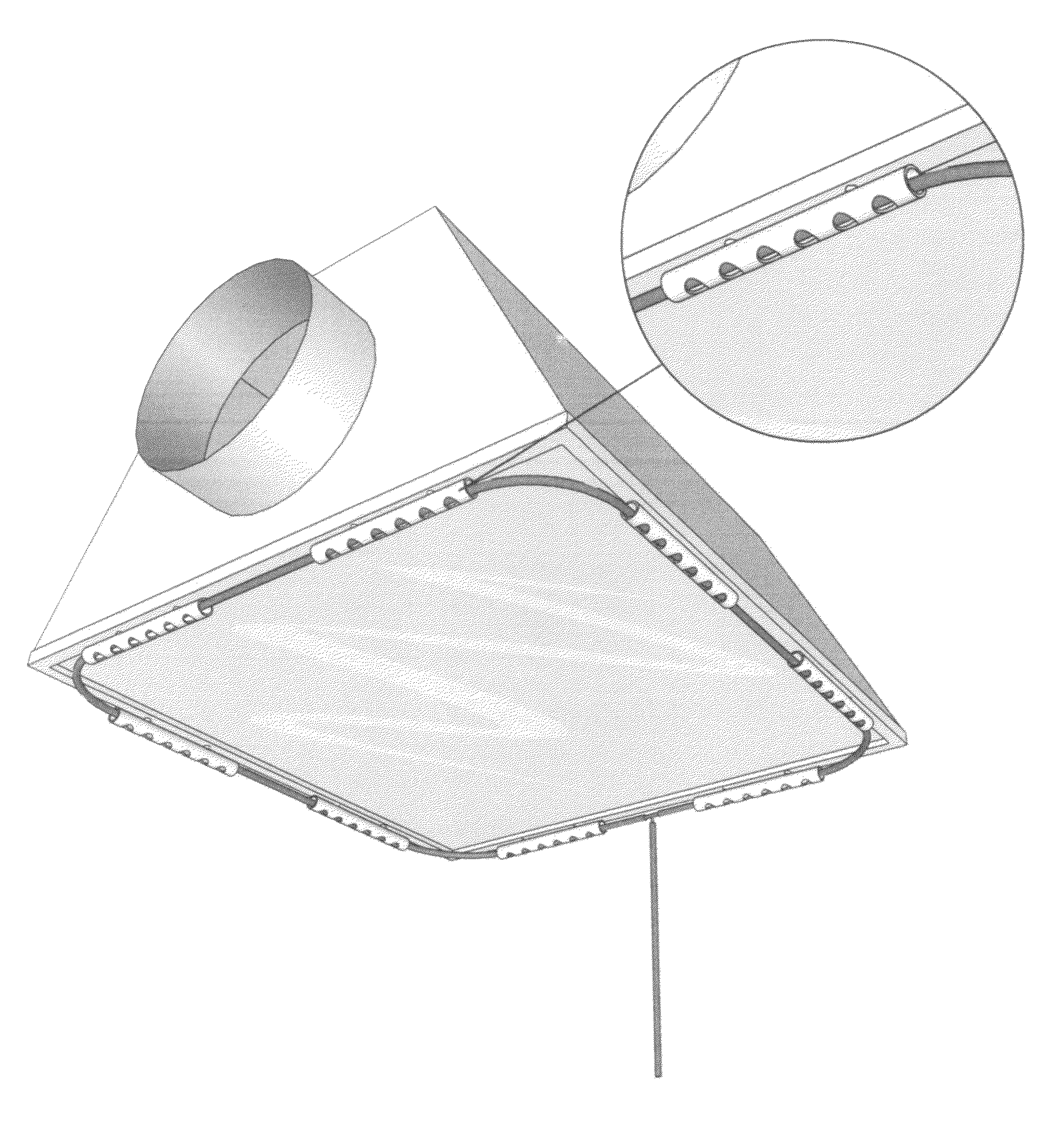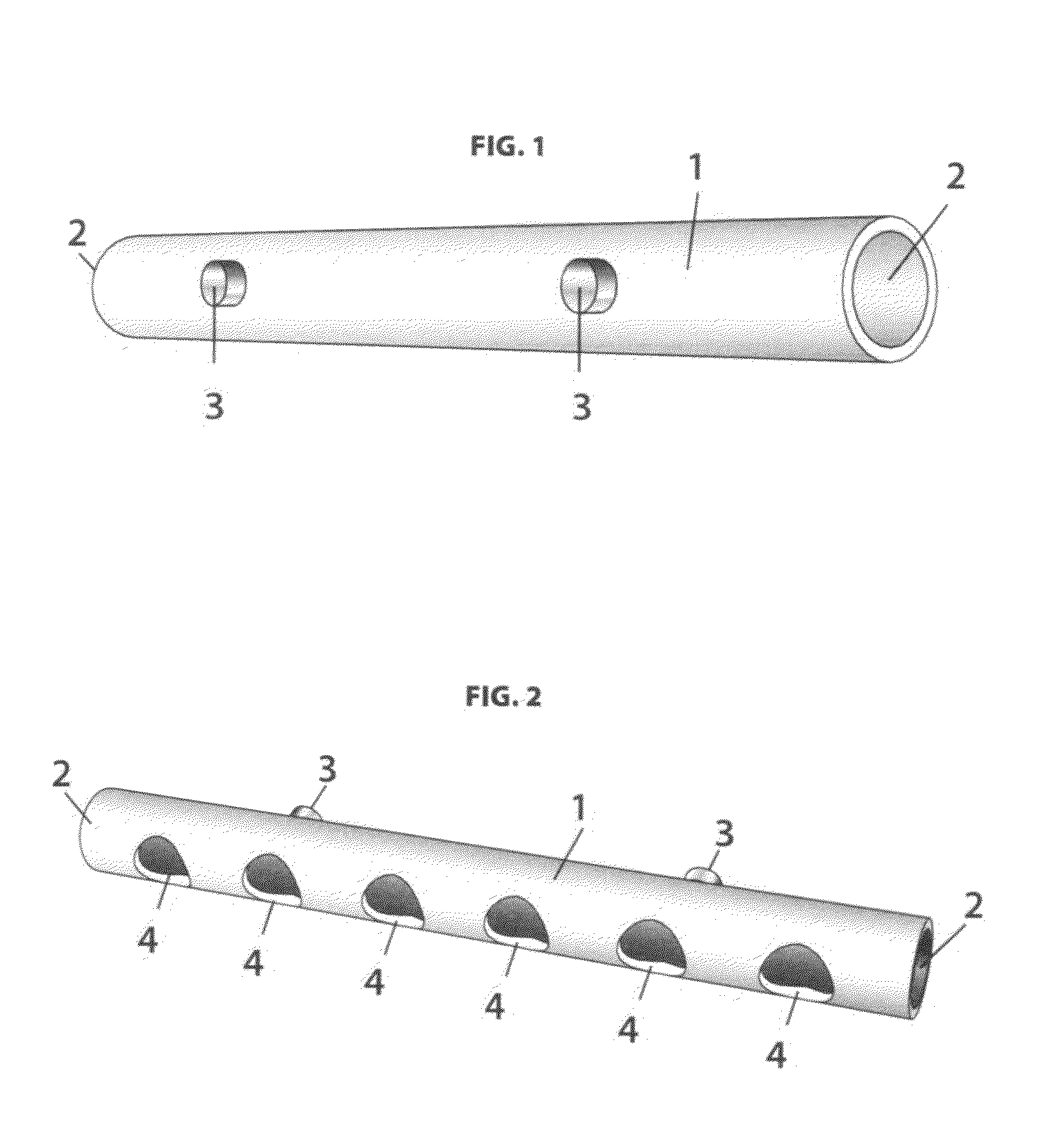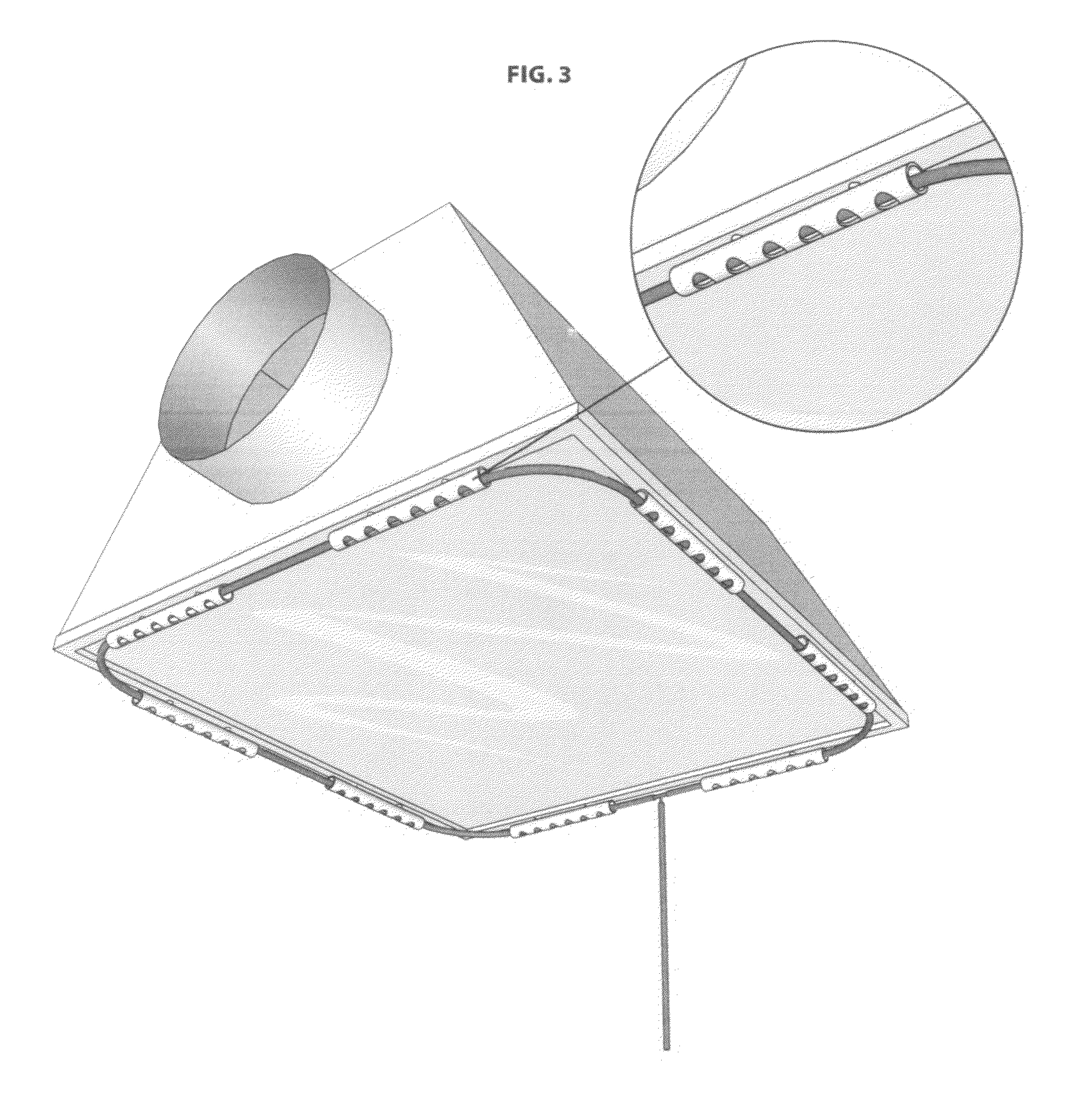Method and apparatus for optimal enrichment of co2 for plant production
a technology for plant production and optimal enrichment, applied in soil-working methods, seed and root treatment, agriculture tools and machines, etc., can solve the problems of limiting the potential of indoor gardens to the amount (and lack of) available co2 in the climate of the grow room, plants can easily consume all of the co2 in an indoor garden in a matter of hours, and eventually stop, diminishing and eventually stopping
- Summary
- Abstract
- Description
- Claims
- Application Information
AI Technical Summary
Benefits of technology
Problems solved by technology
Method used
Image
Examples
Embodiment Construction
[0027]The present invention provides CO2 to be dispersed from CO2 tubing at the optimal distribution point directly above the plant canopy for plant production.
[0028]The present invention provides for CO2 tubing to be secured in a location between both the plant canopy and the lighting system within an indoor garden. Since it is known that CO2 is heavier than air, the present invention will have a various number of openings in the bottom of the apparatus, thus allowing the CO2 to be evenly dispersed directly over the optimal upper third portion of the plant canopy.
[0029]While the CO2 tank system is the safest form of CO2 enrichment for indoor gardens, it is also the most expensive. Average CO2 cost is 0.50 cents per pound at most supply houses, and removing the heavy tanks from the indoor garden and having them refilled at welding supply stores is a chore that every user of the CO2 tank system hopes to do as few times as possible throughout each growing cycle.
[0030]Few indoor garden...
PUM
 Login to View More
Login to View More Abstract
Description
Claims
Application Information
 Login to View More
Login to View More - R&D
- Intellectual Property
- Life Sciences
- Materials
- Tech Scout
- Unparalleled Data Quality
- Higher Quality Content
- 60% Fewer Hallucinations
Browse by: Latest US Patents, China's latest patents, Technical Efficacy Thesaurus, Application Domain, Technology Topic, Popular Technical Reports.
© 2025 PatSnap. All rights reserved.Legal|Privacy policy|Modern Slavery Act Transparency Statement|Sitemap|About US| Contact US: help@patsnap.com



